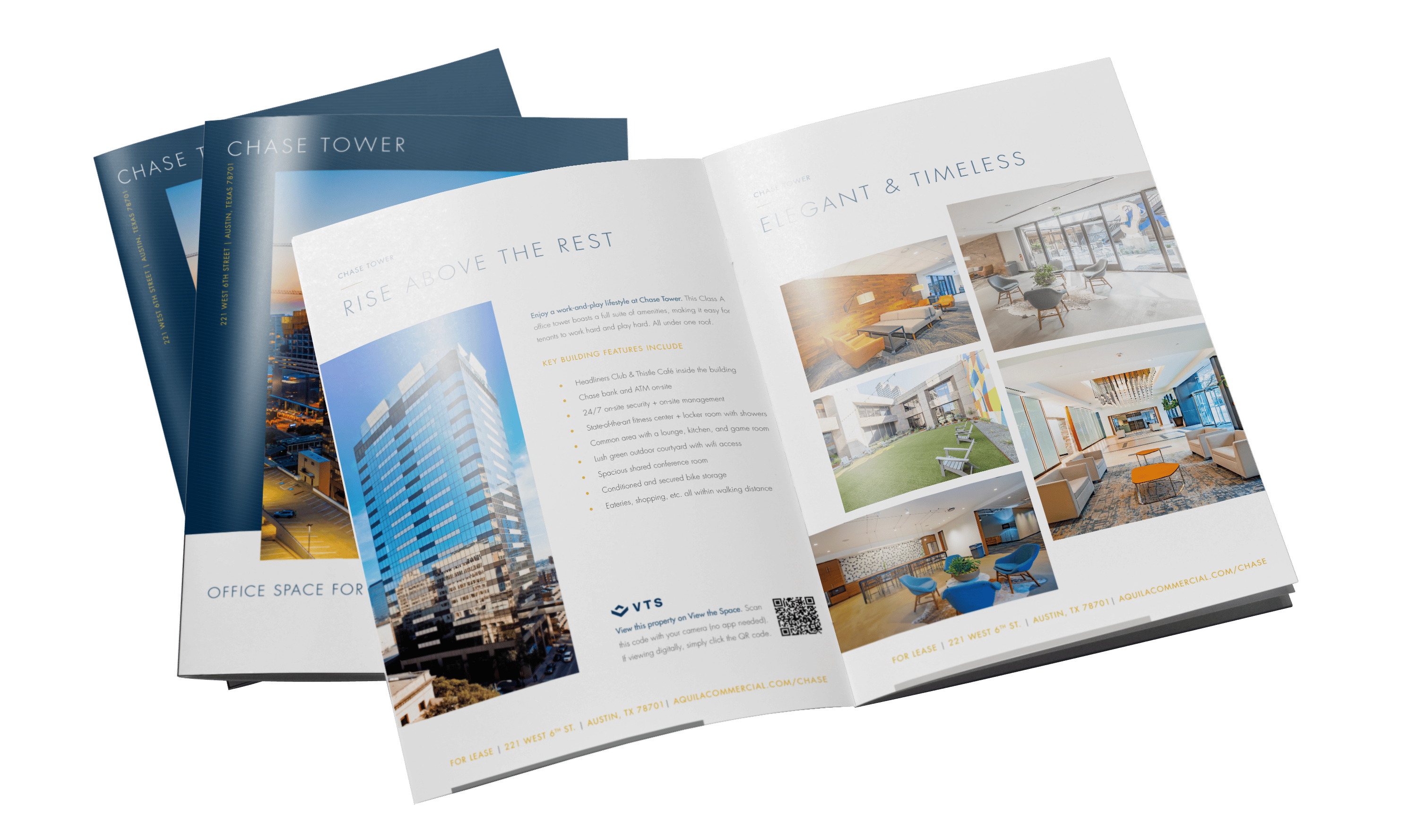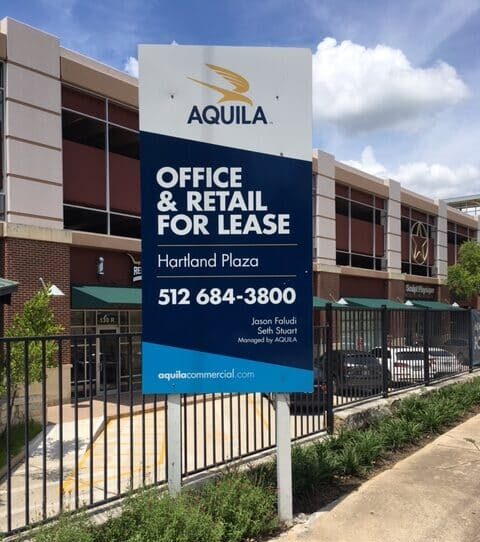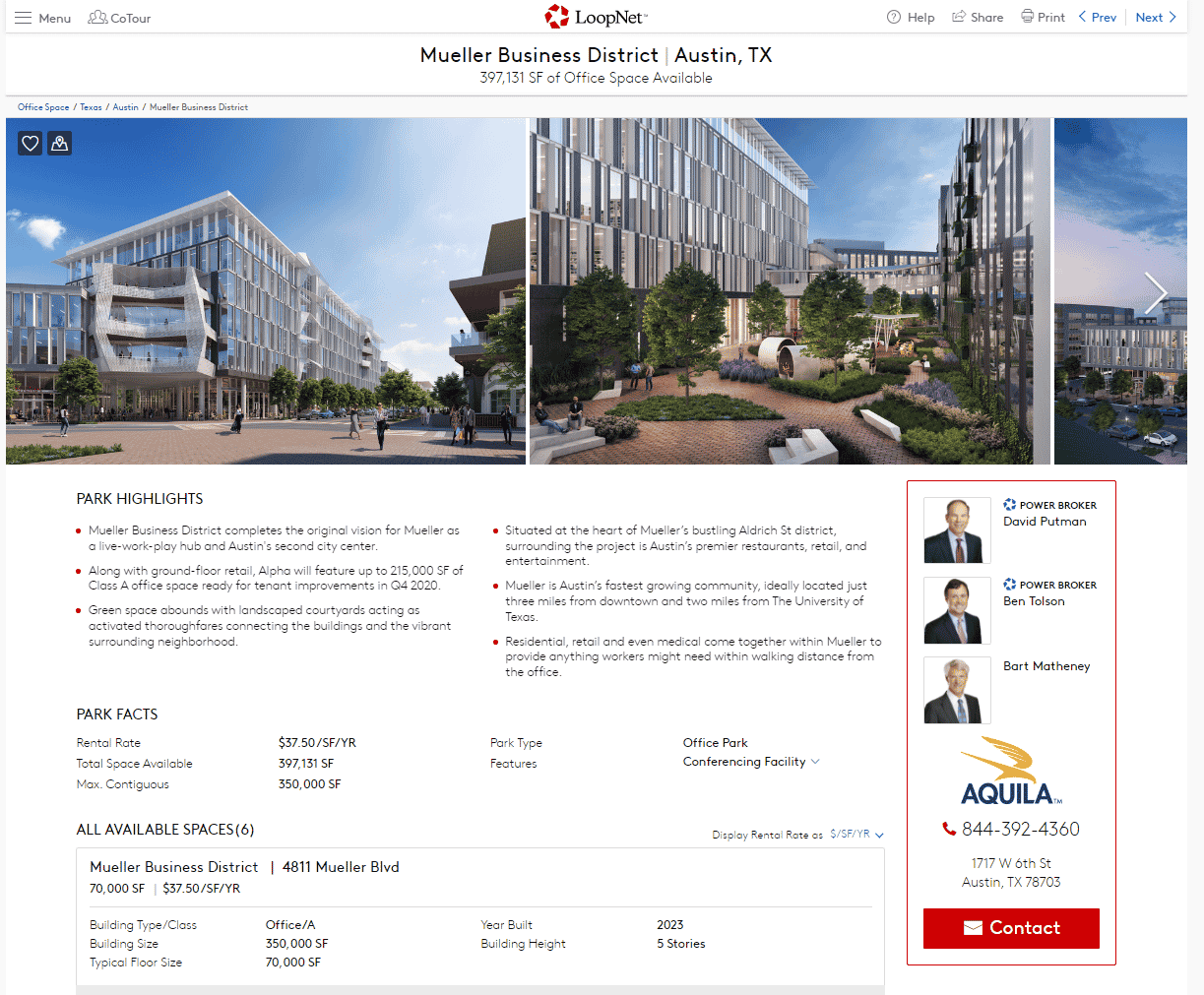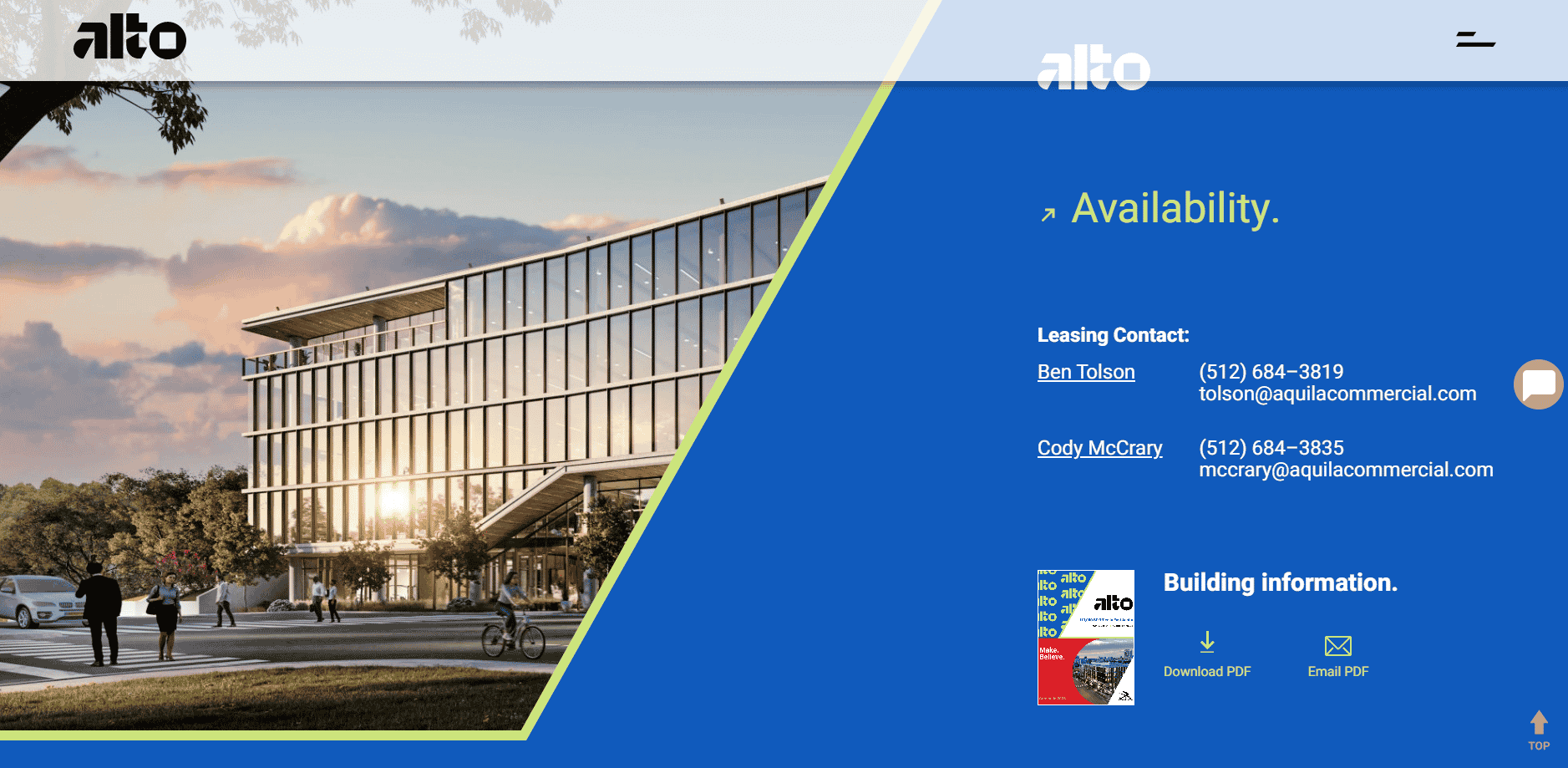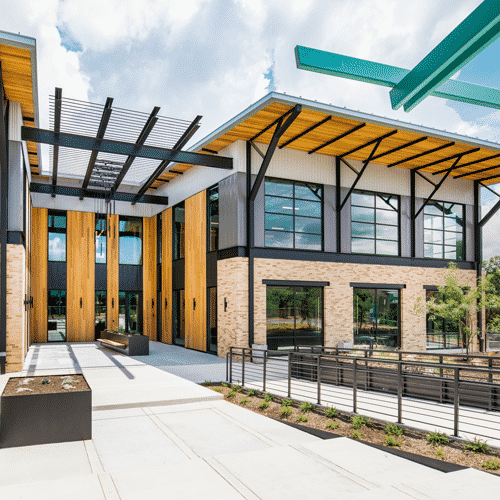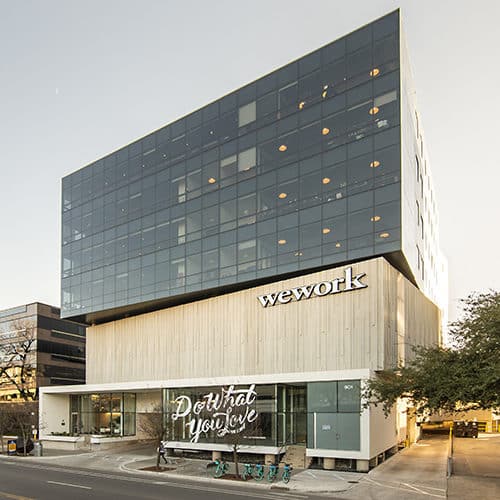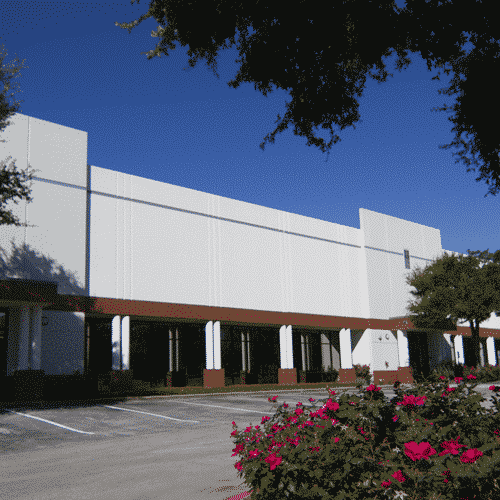Videos are an important asset for your property. These can be used on listings, property websites, email campaigns, ads, and social campaigns. It’s important to capture your audience’s attention and keep your property top of mind.
In this chapter, we explain what videos are a good fit for your property, what elements you need to create them, and how much they cost.
Who can benefit from using video in their property marketing strategy?
The short answer? Everyone. Deciding which type of video fits best into your strategy will depend on your budget and resources.
Read Next: 10 Best Examples of Commercial Real Estate Video Marketing
The Most Effective Videos for Commercial Properties
The seven most effective videos include:
- Drone videos
- Property tours
- Digitally rendered videos
- Value proposition videos
- Property commercials
- Influencer/lifestyle videos
- Tenant testimonial videos
1. Drone Videos
Best Fits: Land, industrial buildings, and some existing buildings (combined with a property tour or other compelling video)
Estimated Cost: $500 to $3,000
One of the most common types of property videos is a drone video. It can be a useful storytelling tool when trying to paint a picture of the location, access, views, or nearby features or amenities.
In the example below, the drone video for the 3625 SH 123 Land serves a key purpose in defining the borders of the parcel.
2. Property Tours
Best Fits: Existing Buildings, recently renovated spaces, buildings that are far away or hard to get to (but can be used for any building)
Estimated Cost: Under $5,000
They are a great way to highlight building exteriors, and on-site and nearby amenities, and to show off cool existing tenant spaces. Usually, these videos have graphic overlays to narrate the video, but we’ve seen good examples with voiceovers or interviews as well.
In the example below, the property tour for Pennybacker Commons uses drone footage, graphics, and interior shots.
3. Digitally Rendered Videos
Best Fits: New developments, major redevelopment projects
Estimated Cost: Simple fly-throughs range from $10,000 to $15,000 and building/property videos range from $20,000 to upwards of $250,000
These videos are basically a property tour video, but instead of having live footage, they utilize digitally rendered images of buildings. This allows you to showcase properties that don’t exist yet or properties that are set to undergo major renovations.
Sometimes you’ll see buildings rendered into actual drone footage of an area like is seen at 1:37 in AQUILA’s Mueller Business District video below.
4. Value Proposition Videos
Best Fits: A wide range of properties – from office and industrial to retail and even land
Estimated Cost: Depends on the length, number of stakeholders interviewed and the amount of time needed to capture the B-roll or any digitally rendered footage used
Value proposition videos are highlight reels to feature the best attributes of the property and how they add value to prospective tenants. Generally, these videos highlight key stakeholders such as a developer/owner, leasing broker, and/or architects in an interview-style setting.
In the example below, a developer and a broker speak about Eastlake at Tillery, an office development in East Austin.
5. Property Commercials
Best Fits: A wide range of properties – from office and industrial to retail and even land
Estimated Cost: Can vary greatly depending on how much custom footage is shot, if actors are used, and if digitally rendered clips are included
A property commercial is similar to a commercial you might see on TV. These videos help to tell a story, are typically highly scripted, and have a heavy emphasis on emotional appeal.
See the 7700 Parmer property commercial below for an example.
6. Influencer/Lifestyle Videos
Best Fits: Mainly used to market office properties
Estimated Cost: Varies greatly depending on the intricacy of the shoot as well as the fee for the influencer (influencer fees can range from hundreds of dollars to hundreds of thousands of dollars based on status and reach)
Lifestyle and influencer videos are also on the rise. These videos can tell an authentic story of a location or neighborhood where a commercial property is located. They usually include B-roll of surrounding amenities to paint a picture of what it would be like to office in the location.
Influencers can help promote properties in locations where they are trusted voices or subject matter experts. Collaborating with an influencer can help bring outside authority and trust to your property’s brand.
In the example below, you can see one video series featuring food and lifestyle influencer Jane Ko of the A Taste of Koko Blog. In these videos, Jane highlights the unique food destinations in the East Cesar Chavez corridor where AQUILA is marketing the Eastlake at Tillery office development.
7. Tenant Testimonial Videos
Best Fits: Existing buildings or campuses with tenants already in place, new developments that have a significant pre-lease tenant secured
Estimated Cost: More than property tours ($5,000) but less than most other commercial videos
Tenant testimonials aren’t used in commercial real estate often, but they can be powerful. Producing testimonials with existing tenants is the ultimate form of social proof. Having an outside source speak about why your property is a great place can create trust with future prospects.
Read the full article here: 7 Videos You Should Be Using to Market Your Commercial Real Estate Property (Examples)
How AQUILA Landed an HQ Relocation at Penn Field
See how AQUILA used virtual tours, market intelligence, photography, video, and more to successfully market a property and attract an HQ relocation.
View Case Study



